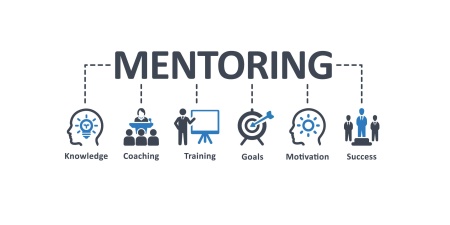With suggested tools that will make the biggest impact
by Thomas J. Armitage, site-seeker, inc.
With COVID behind us, it’s time to re-focus on our pre-pandemic priorities. For most of us, that’s back to the old grind: finding ways to generate more sales and more revenue for our companies. The past 18 months were tough on many companies. Sales and marketing is the best place to start when looking to make the most significant impact on your bottom line. Here are five areas to focus on to generate more sales this year.
Local Optimization
Featured Tool: Yext
For local companies or multi-unit operations with storefronts, local optimization is extremely important.
With so many businesses closing down, pausing efforts, changing hours of operations, requiring new protocols, the online listing world (i.e., websites that give out business information) was an absolute mess.
Business owners neglected to update their listing pages, so when consumers Googled, they found outdated misinformation.
Google My Business, Facebook, Yelp, Bing Places, and TripAdvisor are some of the more prominent names, but there are actually dozens of directory sites that consumers use.
As a business owner, it’s important to have full control over these listings and keep them up-to-date at all times. A tool like Yext can help.
And local optimization doesn’t stop with just listings management. Information on your website and ensuring your site is applicable for relevant Google searches is equally important.
Google can contribute to more than 50% of a business’s traffic (and ultimately sales!).
Build out location pages on your website and improve your website so customers in each of your local markets can easily find you and buy from you.
Social Selling
Featured Tool: LinkedIn Sales Navigator
Venues are open. Events are being held. But not everything will go completely back to normal.
Knowing some folks will be forever skittish with in-person events, you may need to expect lower turnouts at trade shows and accept that you won’t get as many leads from those outings.
You should also be mindful of the many companies that have gone partially or fully remote and have reduced travel budgets as a result.
One way to compensate is through social selling or, using social media to support your sales efforts.
Look at it as an extension of your company’s ongoing marketing and sales efforts. The only difference is: it’s you.
It’s your profile, it’s your comments, it’s your content, it’s your personal brand, it’s your direct messages, it’s your responsibility.
Use a prospecting tool like LinkedIn Sales Navigator. From there, find appropriate folks in your target audience and connect. Give them a reason to accept.
Create content and educate your users. Talk about what you know and keep it relevant based on what you sell, what your company stands for, and what you stand for.
Comment and interact. It’s important to be an active part of the social community. Develop real relationships.
And finally, when the time is right, go into sales mode.
Keep your eyes on the prize. You are investing time in order to sell. But you need to avoid being a 1970s used car salesman. Be a resource for the online community, and the leads will follow.
Digital Customer Service
Featured Tool: Smith.ai
Today, customers expect responses from businesses much faster than they had in years past. As a matter of fact, more and more folks expect answers within the hour!
“Customer Service 101” tells us that the faster and better you respond to customer needs, the more likely you are to get that sale and keep them coming back to buy again and again.
If you want to increase sales and increase the average lifetime value of a customer – you have to give proper attention to customer service. Today, that’s mostly done through digital communication.
Look beyond the phone and consider the many ways that customers engage online:
- Google My Business chat
- Facebook Direct Message
- Instagram Direct Message
- Direct email
- Forms on your websites
- Live chat on your website
- SMS (text) to a dedicated number
The more channels you open up for customers to engage, the better, considering everyone has different digital preferences.
Remember though. With that comes increased complexities in directing all those lines of communication to staff members, and increased labor demands in how you will manage all those interactions successfully.
There’s software out there that can help aggregate all chats and requests into one place for easier management. Smith.ai is an example.
Some tools can even incorporate bots (i.e. auto responses via technology) and virtual live assistants to help manage the inquiries until they’re viable enough for a human salesperson or customer service representative to get involved.
That makes for a much more efficient system and allows you to offer better customer service.
Aligning Sales and Marketing
Featured Tool: Hubspot
There’s one thing that almost every business – regardless of size or industry – has in common. They don’t use their CRM correctly.
CRM, which stands for “customer relationship management,” is software used by most companies to unify, organize and manage their marketing, sales and customer service efforts.
They come in many shapes and sizes. And have all sorts of features from contact or lead management to live chats to ticketing systems to email marketing to digital quoting.
Some well-known names include Salesforce, Hubspot, and Active Campaign.
If a business can’t find success with these tools, it’s rare that the tool itself is the problem, but rather the business itself is typically not using the tool the way it’s intended to be used.
The best place to begin is to make sure sales and marketing teams are aligned.
Both teams have the same overall company goal but at the same time, both sales and marketing also have different goals and responsibilities of their own. Sharing this one single tool, it’s imperative they agree on how to use it.
Select the right tool, the one that makes the most sense for your business. Upon purchase, make sure the software provider offers onboarding and training. Set up the account fully and customize it to fit your needs.
Make sure marketing has a role.
This can include data capture via forms and live chats on the website. It can include list segmentation. It can include social media scheduling. It can include email marketing and automation. And it can include campaign tracking.
Make sure sales have a role. This can include lead qualification. It can include tasks and prospect management. It can include outreach and follow-ups. It can include quoting and closing. It can include pipeline measurement, forecasting and other reporting.
Make sure each team understands the other team’s role. Operate off a standard operating procedure (SOP) and keep the data clean.
Marketing and sales needing to work more closely together isn’t a response to the pandemic. But as many businesses suffered from dry pipelines last year, it emphasized the need for better alignment among the two departments.
Start with better-shared use of your CRM and use the tool to help bind the two teams together.
Lead Intelligence
Featured Tool: Site-Insight
What if I told you there’s a way to see the companies coming to your website BEFORE they contact you…
Even really great websites of really great companies still see conversion rates at only 3%. In other words, only 3% get in touch with you.
That means you have no idea who the other 97% of visitors are. A lead intelligence tool helps fill in that gap and provide that data.
There’s a few software that do it. Site-Insights is one.
It works by identifying the IP address of a company who is visiting your site and runs it against its database of company information. In doing so, it provides rich information on who that company is and whether they are worthwhile to you and your sales team.
Google Analytics (the most popular website analytics tracking tool in the world) provides really good data. But it’s all anonymous data, due to privacy concerns. So a lead intelligence tool is a great complement to the analytics tools you’re already using.
You’ll be able to see a whole bunch of information beyond what Google Analytics provides:
- Company name
- Company location
- Company size
- Company description
- Company website
- # of pages visited
- # of total visits
- Pages visited
- Source
If integrated with your CRM, this solution can help you better understand the makeup of your audience, can allow for better and more regular contact with prospects, and can ultimately fill your sales pipeline faster to help you close more deals.
Big name companies are using tools like this to help glean better insight into the visitors of their site and be more active in their outreach efforts.
For sales teams that are hungry, this tool can work wonders.
Getting Started
Like anything in sales and marketing, it’s always best to start with a plan.
What are your goals? Who is your target customer? What data do you have on hand? What are you going to do with that data? How many are on your team? And how much time can you devote to sales and marketing support?
For any company, make sure you build a plan first.
In doing so, you’ll be able to better fit new technology into the mix and properly allocate the right time, resources, and budget towards activities that will affect the bottom line.










